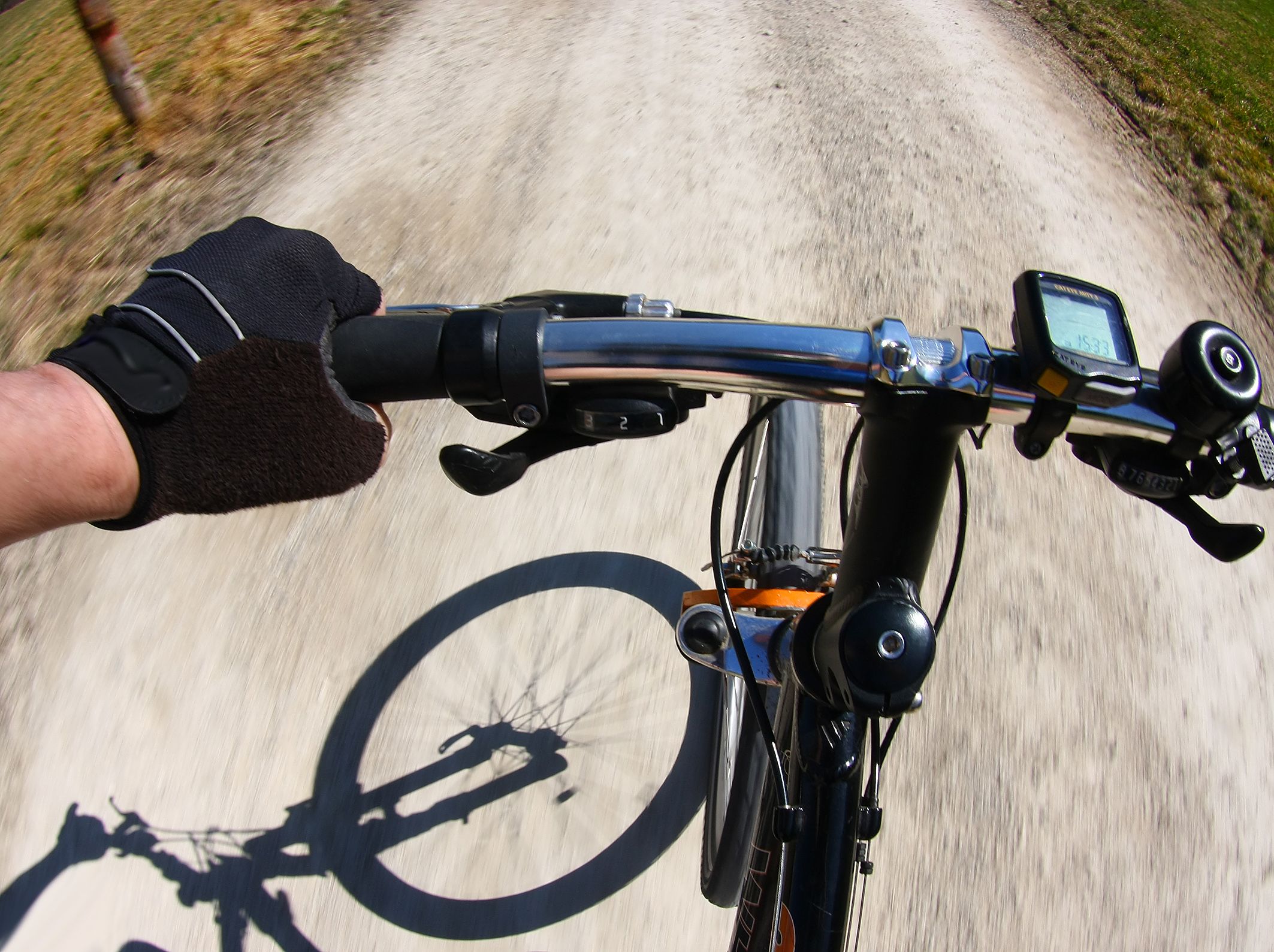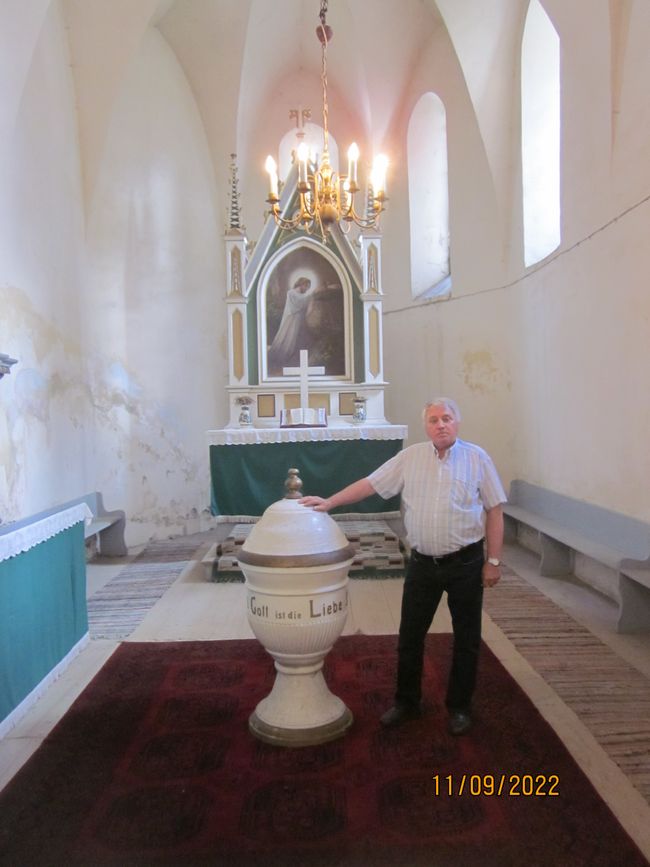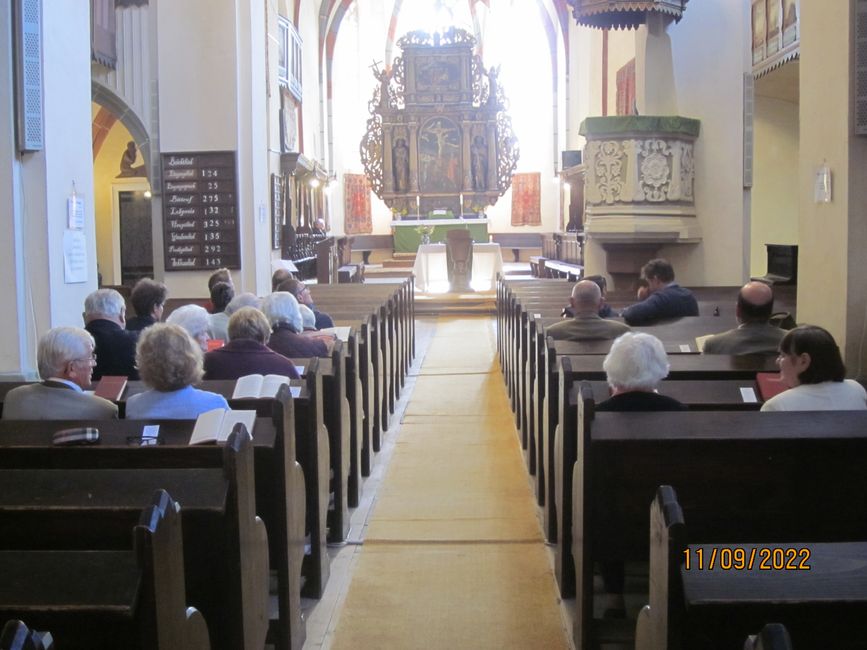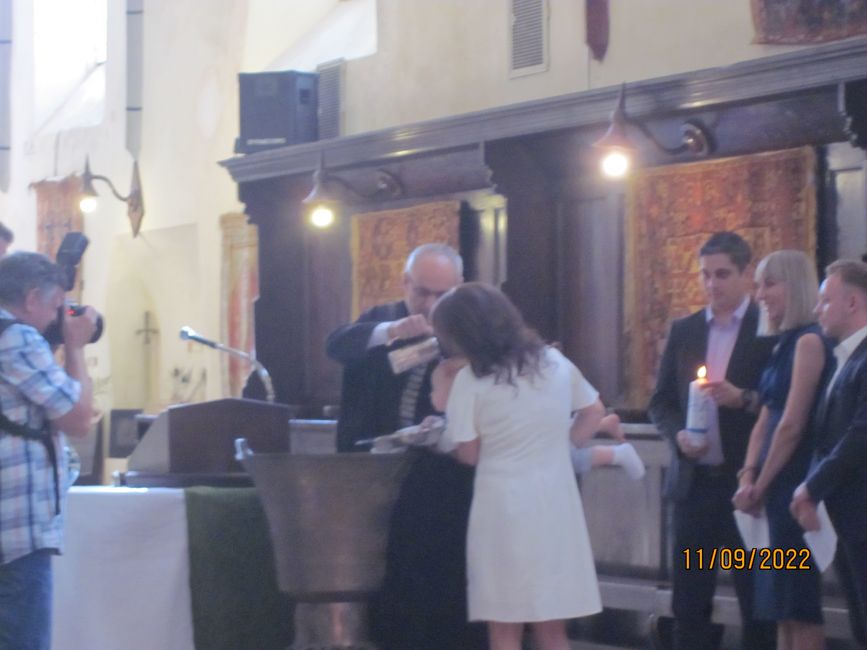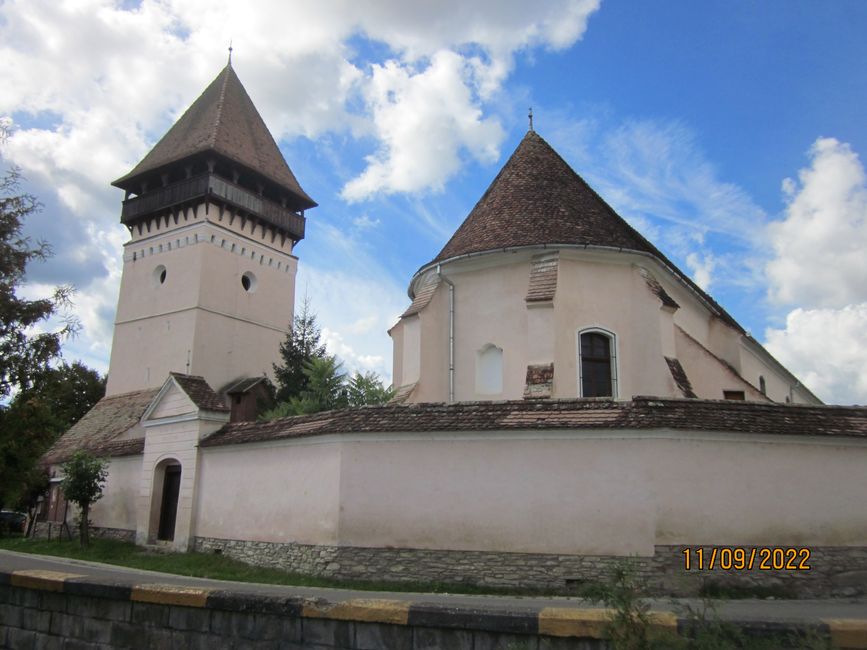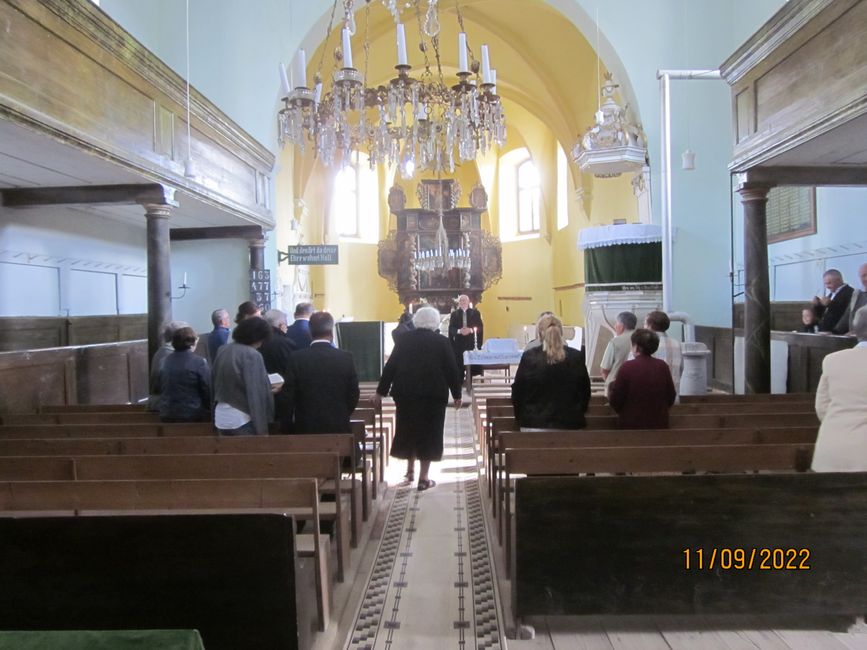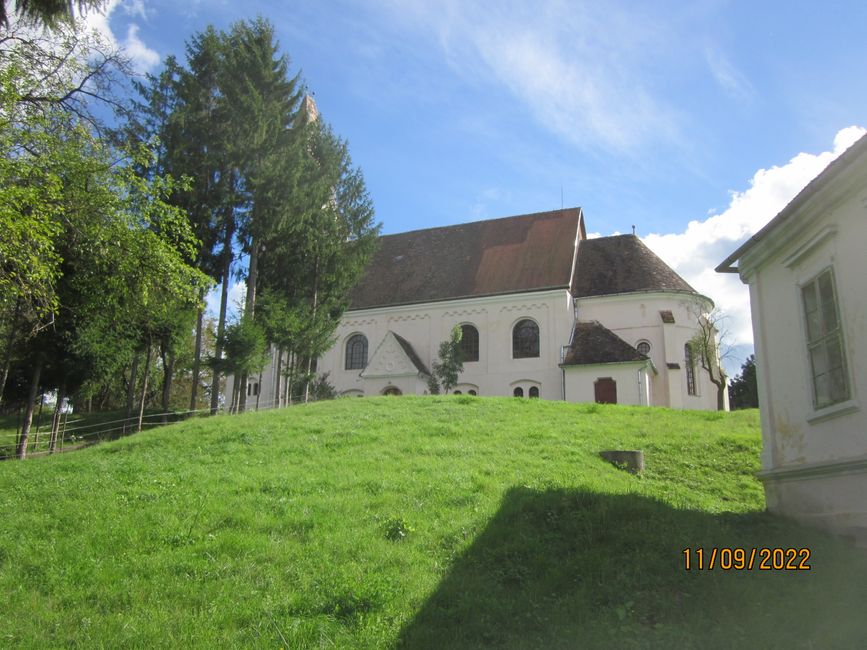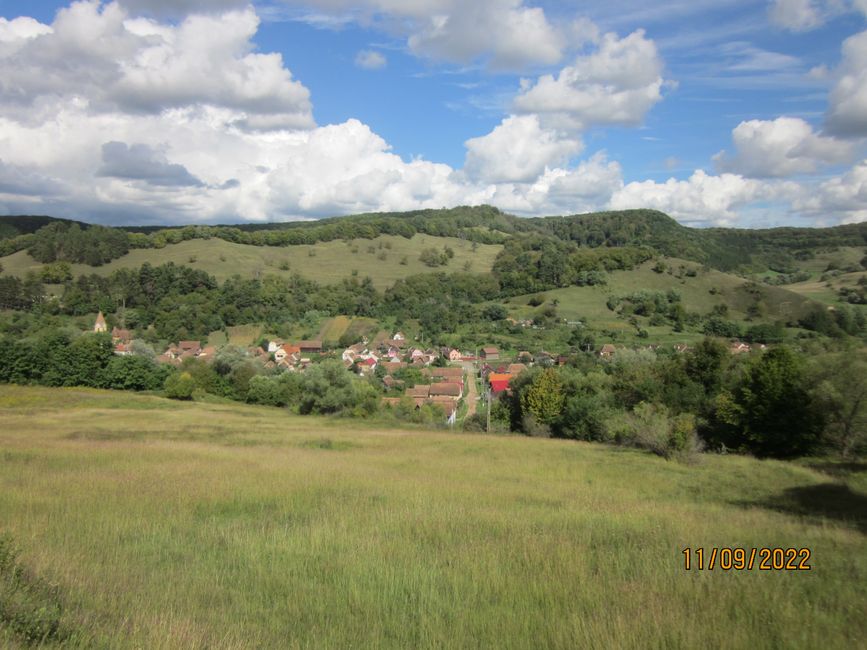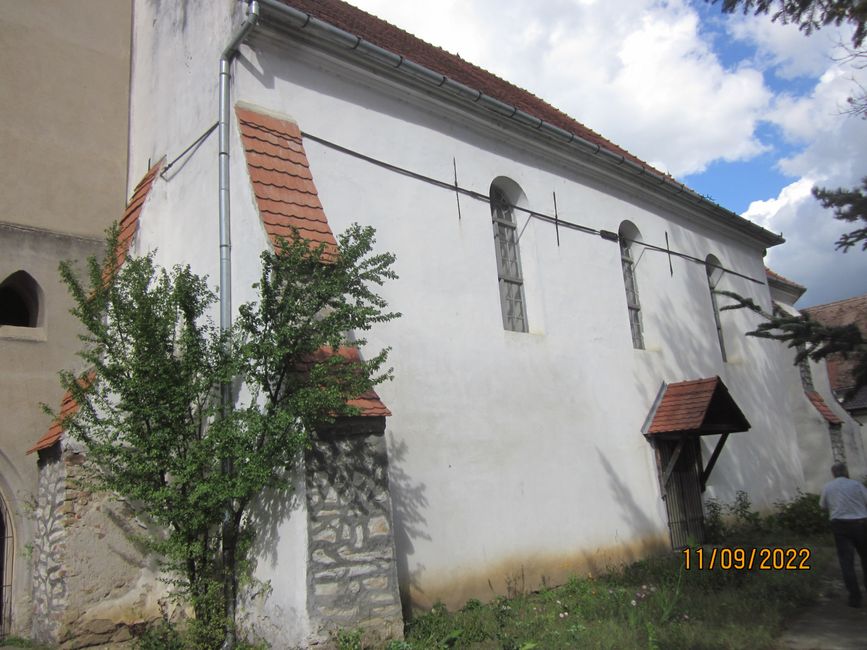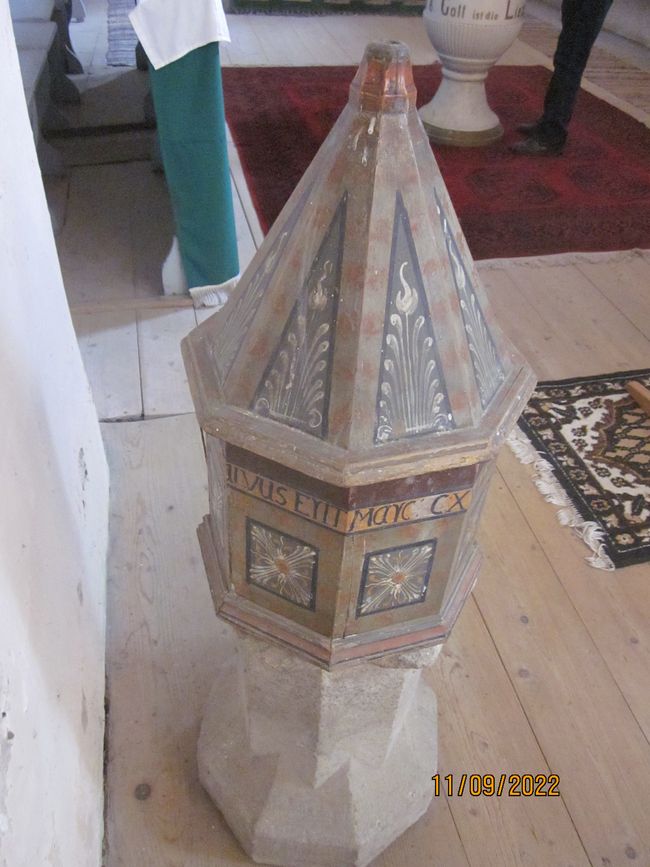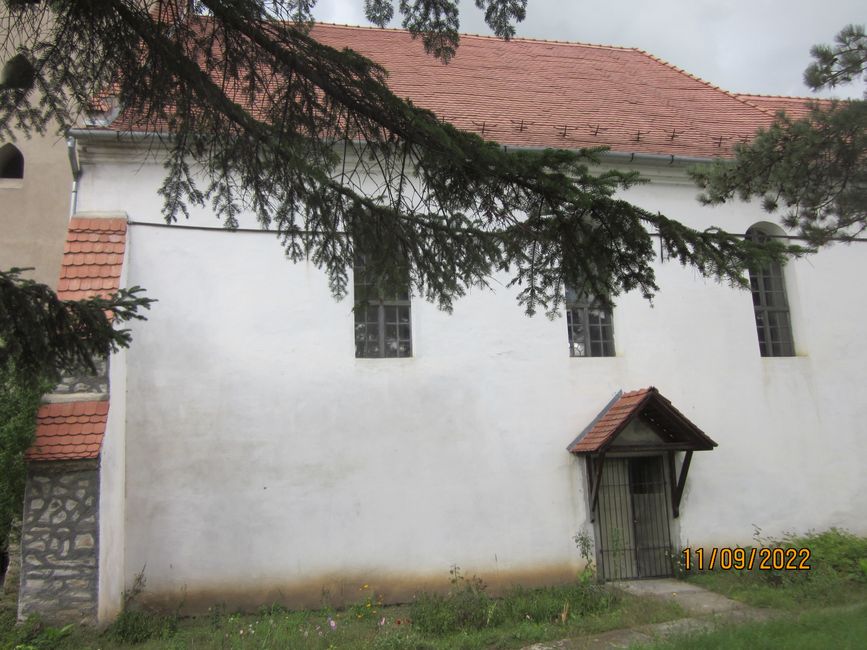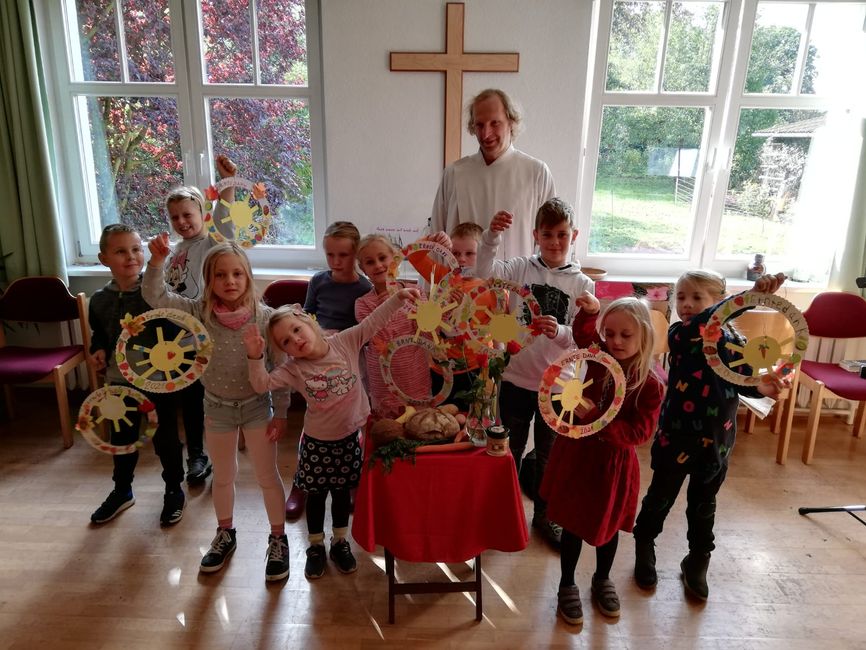
Go East - Mit dem Fahrrad zu Ev. Gemeinden in Osteuropa
vakantio.de/go-east-mit-dem-rad-zu-gemeinden-in-osteuropa
Day 65 - Sept 11: Dunersdorf / Dunes: mobile rural community
Gepubliceerd: 13.09.2022
Abonneren op de nieuwsbrief
I have been traveling across Eastern Europe for 9 weeks now. Of course, I attended the Protestant church services in Czech Republic, Poland, Slovakia, and Hungary on Sundays. Sometimes, I understood a few words but I couldn't comprehend the sermon and the texts very well. That's why it is so wonderful to experience church services in German here in Romanian Transylvania, like on this Sunday.
I first went to the main worship service in Schäßburg with Pastor Fröhlich. The order of service is essentially the same as in Germany. The only difference is that the responsive psalm between the pastor and the congregation is not common in the liturgy, but all the other elements are almost the same. Around 25 people attended the worship service in Schäßburg. Before it started, people were talking normally in German. After the worship service, there was a baptism, and then Pastor Fröhlich and I went to Großalisch (German) , Seleus (Romanian) to attend another rural worship service. I delivered a greeting from Pastor Vogel to the approximately 25 visitors, as this community was part of his area of responsibility from 2000 to 2006 when he lived and worked in the neighboring village of Dunersdorf (German) , Dunes (Romanian). They were delighted to hear the greeting, as I could tell from the applause. There was also a wedding ceremony during the worship service, and afterwards, there was a church café where I had the opportunity to talk with some people.
I also met Gerhard Paul, the curator of Danesdorf, who is basically Gottfried's 'right hand' while he was serving here. Today, he takes care of all matters concerning the Protestant church in the village. He invited me to have lunch with him and we had some time to talk about Dunesdorf today. Unfortunately, there are currently no worship services taking place in Dunersdorf because the number of congregation members has decreased significantly in the last 15 years. Therefore, the last 3-4 members now attend worship services in neighboring villages, just like today. It would be wonderful if we could have the same situation in our villages.
Dunesdorf used to be a mixed village of Romanians, Germans, and Hungarians because it is located directly on the main road. However, the German villages are mostly situated in the side valleys along the Great Târnava River, as Gerhard Paul explained to me. Dunesdorf also has a fortified church, but it is not as historically significant as Biertan or Wurmloch, which is why there are hardly any tourists visiting the church.
After lunch, we took a short drive to those former purely German villages and went to Kreisch, which is scenically located at the end of a road. There are also hardly any Transylvanian Saxons left in this former typical village. The church and the pastor's house are locked. Then we drove over a hill to the next former Transylvanian village. The situation there is similar. Finally, we returned to Dunesdorf and visited the small fortified church, where Gottfried lived for 6 years, held worship services, and cared for the congregation members. The old, small font in particular is historically interesting.
In the adjacent parsonage, I was allowed to spend the night in a small side room because the pastor's apartment is sublet. I said goodbye to Gerhard Paul, settled in, wrote in my blog, and planned the next day, which would take me to Medias. I was thinking of Gottfried, who gave me valuable advice and provided numerous contacts for my journey through Romania.
Abonneren op de nieuwsbrief
Antwoord
